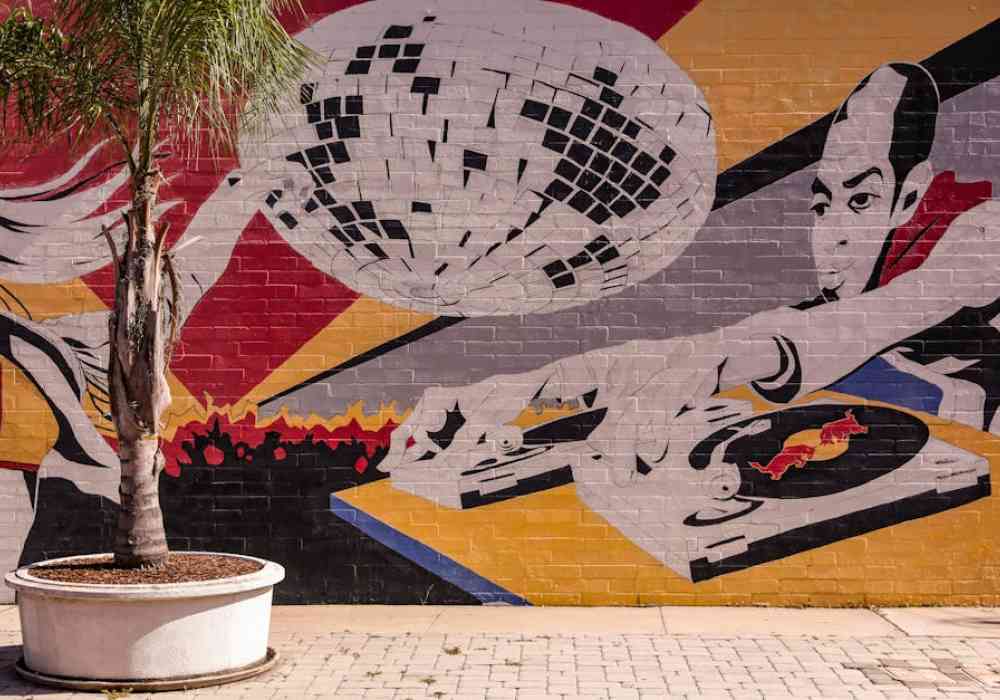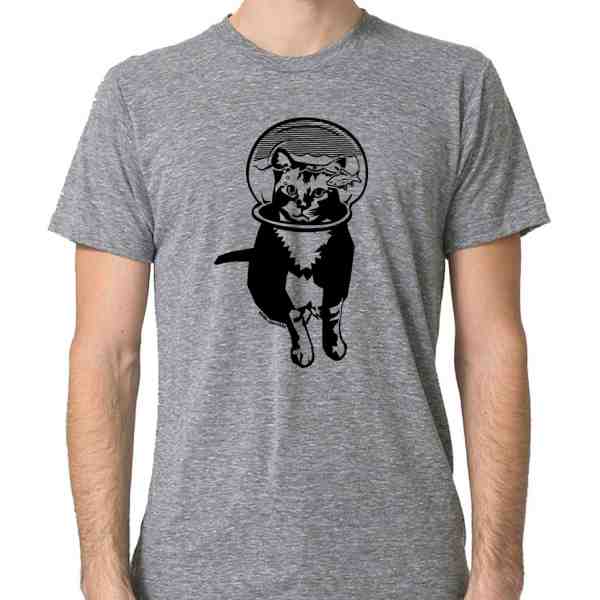Orlando’s Street Art Scene: A Visual Feast
Street art Orlando is a vibrant mix woven through the city’s diverse neighborhoods, offering a glimpse into its artistic soul. From the colorful murals of the Mills 50 District to the eclectic displays in Downtown Orlando, street art here is more than just paint on walls—it’s a testament to the city’s creative spirit.
- Key Neighborhoods: Mills 50, Downtown Orlando, WestArt/Parramore District.
- Must-See Murals: Pulse mural by Andrew Spear, Lamp Shade Fair mural by Boy Kong.
- Notable Artists: Carolyn Schultz, Tim Eggert.
- Community Impact: Promotes cultural expression and social awareness.
Orlando’s art scene is a flourishing landscape where visual arts and public art projects merge to create a city filled with color, reflection, and meaning. This growth is further fueled by initiatives like Bloomberg Philanthropies’ Public Art Challenge, which recently awarded Orlando for its project that merges art with social issues.
I’m Chris Higgins, a graphic artist passionate about the street art Orlando offers. Throughout my career, I’ve immersed myself in the layers of this city’s artistic canvas, inspired by its bold and dynamic artistic expressions. Join me as we dig deeper into Orlando’s street art world, exploring the talent and tales behind each unique piece.
Exploring Orlando’s Street Art
Orlando is not just a city of theme parks; it’s a vibrant hub for street art, where murals transform walls into stories of culture and creativity. The city’s street art scene is a colorful testament to its diverse community and the local artists who bring it to life.
Murals: The Heartbeat of Orlando’s Streets
Murals are the most prominent feature of street art Orlando. They range from large, intricate designs to simple yet striking pieces. These murals are scattered across the city, each telling a unique story. For instance, the “Pulse Love” mural by Michael Owen, located on S. Orange Ave, is a powerful tribute to love and resilience. Similarly, the “Burrowing (or Cosmic) Owl” mural in Kissimmee offers a vibrant and symbolic representation of the area.
Celebrating Local Artists
Orlando’s street art scene thrives on the creativity of its local artists. Artists like Andrew Spear and Boy Kong have left their mark across the city with iconic pieces such as the “Pulse Love” mural and the “Kabooki Sushi” mural, respectively. These artists, among others, contribute to the city’s evolving art landscape, creating works that resonate with both locals and visitors.
Community and Cultural Impact
Street art in Orlando is more than just aesthetic; it plays a significant role in community engagement and cultural expression. Initiatives like Osceola Arts’ ARTisNOW have helped transform areas like Kissimmee into vibrant art hubs. These projects not only beautify the city but also foster social awareness and community pride.
Moreover, Orlando’s participation in Bloomberg Philanthropies’ Public Art Challenge highlights the city’s commitment to using art as a tool for addressing social issues. This initiative supports projects that engage artists and farmers to create installations raising awareness about access to healthy food.
A Visual Feast
Exploring the street art Orlando offers is like walking through an open-air gallery. Each mural and piece of art reflects the city’s dynamic culture and the stories of its people. Whether you’re a seasoned art enthusiast or a curious traveler, Orlando’s street art scene promises a visual feast that captivates and inspires.
Top Street Art Locations in Orlando
Orlando’s street art scene is a vibrant mix, woven through its diverse neighborhoods. Let’s explore the top spots where street art Orlando shines the brightest.
Milk District
The Milk District is a treasure trove for street art lovers. Known for its eclectic vibe, this area is filled with colorful murals that reflect the community’s creative spirit. As you stroll through the district, you’ll encounter a variety of styles, from abstract designs to thought-provoking pieces. One standout is the “Milk Mart” mural, which celebrates the district’s roots with vibrant colors and playful imagery.
Mills 50 District
When it comes to street art Orlando, the Mills 50 District is a must-visit. This neighborhood is a canvas for local artists, featuring murals that are both bold and meaningful. The Pulse mural by Andrew Spear is a poignant tribute to the city’s resilience and solidarity following the 2016 tragedy. Meanwhile, Boy Kong’s Lamp Shade Fair mural adds a whimsical touch to the district. The iconic alligator and oranges mural on North Mills Avenue captures the essence of Florida and is a favorite among visitors.
Downtown Arts District
Downtown Orlando is not just the heart of the city; it’s also a hub for artistic expression. The Downtown Arts District is home to a plethora of murals that celebrate Orlando’s rich cultural diversity. Here, you’ll find the Orlando Postcard mural by Greetings Tour, a vibrant piece that captures the city’s spirit. This district is also part of the city’s participation in Bloomberg Philanthropies’ Public Art Challenge, which supports projects that use art to address social issues, such as healthy food access.
These locations are just the beginning. Orlando’s street art scene is ever-changing, with new murals popping up regularly, ensuring that every visit offers something fresh and exciting. As we dig deeper into street art, we’ll explore the fascinating differences between street art and public art, uncovering the nuances that make each form unique.
The Difference Between Street Art and Public Art
Street art and public art might seem similar at first glance, but they have distinct differences that set them apart. Understanding these differences helps us appreciate the unique role each plays in shaping the vibrant art scene in various cities.
Street Art: Raw and Unfiltered
Street art is often seen as a form of artistic expression that thrives on spontaneity and rebellion. It’s created in public spaces without formal permission, which sometimes raises questions about legality. This raw form of art is known for its boldness and ability to convey powerful messages quickly. In many urban areas, street art can be found in districts where local artists use walls as their canvas to reflect community stories and emotions.
However, the legality of street art can be complex. While some pieces are celebrated, others might be considered vandalism. This legal gray area means that street artists need to be aware of property laws and the potential consequences of their work. Yet, this very challenge adds to the allure and excitement of street art, making it a dynamic and changing part of the urban landscape.
Public Art: Curated and Collaborative
In contrast, public art is typically commissioned and curated by organizations or local governments. These artworks are often part of larger projects aimed at enhancing public spaces. Public art is designed to be accessible and inclusive, often reflecting community values and culture. Public art initiatives, like those supported by Bloomberg Philanthropies’ Public Art Challenge, focus on addressing civic issues through artistic installations.
Public art involves a collaborative process, including art curation, where artists, curators, and city planners work together to create pieces that resonate with the community. This structured approach ensures that public art is both impactful and respectful of the space it occupies.
The Intersection of Street and Public Art
While street art and public art have their differences, they also intersect in meaningful ways. Both forms contribute to the cultural mix of a city, offering residents and visitors alike a visual feast that inspires and educates. This intersection is evident in projects that blend the spontaneity of street art with the intentionality of public art, creating spaces that are both thought-provoking and welcoming.
As we continue to explore the art scene, we’ll dig into the legal aspects of street art, uncovering the rights and responsibilities of artists in this changing field.
Legal Aspects of Street Art
Let’s explore the legal maze surrounding street art in Orlando. This topic covers property law, copyright law, and artist rights, all of which play a crucial role in how street art is created and perceived.
Property Law: Who Owns the Wall?
Street art is often painted on walls that belong to someone else. This raises important questions about property rights. In Orlando, as in many places, painting on someone else’s property without permission is generally seen as vandalism. Artists need to be mindful of these laws to avoid legal troubles.
Getting permission from property owners can turn an illegal act into a celebrated piece of art. This is why some of the most admired street art in Orlando, like those in the Mills 50 District, often have a backstory of cooperation between artists and property owners.
Copyright Law: Protecting the Artist’s Work
Once a piece of street art is created, it automatically gains copyright protection. This means the artist has exclusive rights to reproduce and distribute their work. However, enforcing these rights can be tricky in street art, where pieces are often temporary and publicly accessible.
Artists in Orlando can register their work with the U.S. Copyright Office to strengthen their legal standing. This step can help protect their rights if others attempt to use or sell images of their art without permission.
Artist Rights: Recognition and Respect
Artists have the right to be credited for their work. This is a fundamental aspect of artist rights, ensuring they receive recognition for their creativity. In Orlando, many artists strive to have their work respected and acknowledged, both legally and culturally.
The Visual Artists Rights Act (VARA) in the United States provides some protection for artists, even in the street art field. It allows artists to prevent the destruction of works of recognized stature. This means that even if a mural is on someone else’s property, there are circumstances where the artist can stop it from being destroyed.
In Orlando, the balance between artistic expression and legal boundaries is delicate but essential. Understanding these legal aspects helps artists steer the challenges of creating street art while protecting their rights and respecting others’ property.
With these legal foundations in mind, let’s explore some frequently asked questions about street art in Orlando.
Frequently Asked Questions about Street Art in Orlando
Is there an art scene in Orlando?
Yes, Orlando has a vibrant art scene that goes beyond its famous theme parks. The city is rich in both visual arts and performing arts, offering a diverse range of creative expressions. Downtown Orlando is a hub for artistic activities, featuring galleries, theaters, and public art installations. The city’s commitment to the arts is evident in places like the Mills 50 District, where colorful murals and street art are celebrated as part of the urban landscape.
What is the most famous piece of street art?
While Orlando boasts many impressive murals, one of the most iconic pieces of street art worldwide is “Balloon Girl” by the renowned graffiti artist Banksy. Although this piece is not located in Orlando, it serves as a benchmark for street artists everywhere, inspiring local creatives to push the boundaries of their own work. In Orlando, murals such as the alligator and oranges on North Mills Avenue have become local favorites, representing both the city and the state of Florida in a unique way.
Is it legal to do street art?
The legality of street art in Orlando is complex, involving property law and copyright law. Without permission from property owners, creating street art can be considered vandalism. However, when artists collaborate with property owners, their work can transform into legally recognized and celebrated art pieces.
Once a mural is created, it is automatically protected by copyright law. This gives the artist control over reproducing and distributing their work. However, enforcing these rights can be challenging due to the public and temporary nature of street art. Artists can register their work with the U.S. Copyright Office to strengthen their legal claims.
In Orlando, artists must steer these legal aspects to protect their rights while ensuring their work is respected and legally compliant. Understanding these laws helps artists create freely while maintaining the integrity of their work and respecting others’ property.
Conclusion
Orlando’s murals offer a vibrant mix of colors and stories, turning the city into an open-air gallery. These artworks are more than just paint on walls—they’re experiences that capture the essence of the community and the creativity of local artists. From the vivid Milk District to the busy Downtown Arts District, street art in Orlando adds a unique flavor to the city’s cultural landscape.
At Handshucked Designs, we share a passion for art that resonates with the heart and soul of Florida. Our work, like the celebrated “Lost Cat” series, is inspired by the dynamic energy of street art. We believe that art should be accessible and engaging, just like the murals that adorn Orlando’s streets.
Whether you’re an art enthusiast or a curious visitor, exploring Orlando’s street art scene is an unforgettable journey. Each mural tells a story, offering a glimpse into the diverse and colorful life of the city. These art experiences not only beautify the urban environment but also foster a sense of community and pride.
We invite you to find more about our art and design philosophy. Visit Handshucked Art and Designs to explore our unique creations and learn how we bring the spirit of street art into our work.





